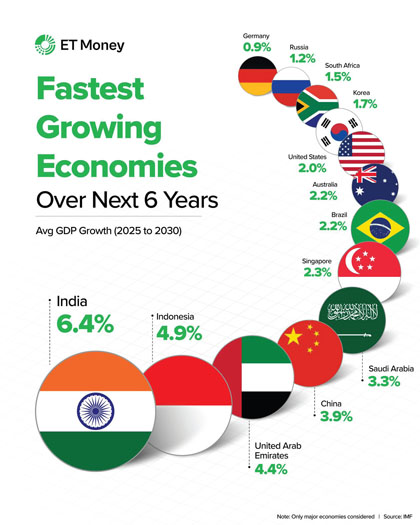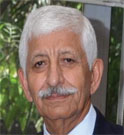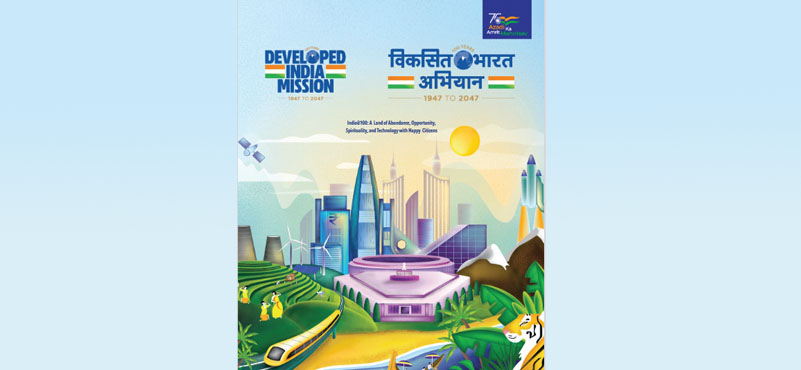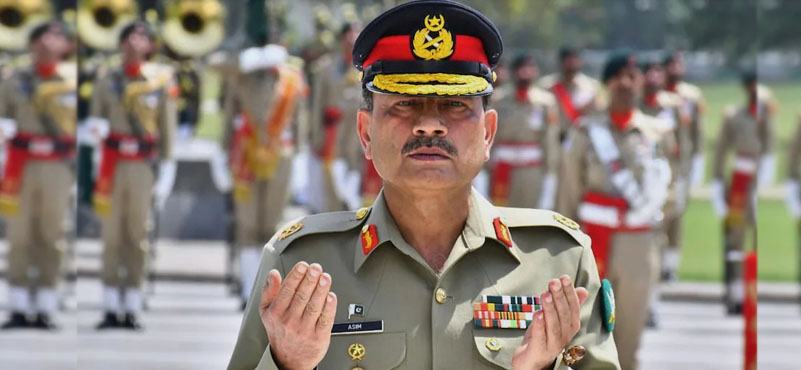It is a tough call, quite do-able. Having a goal is better than not having any. A laudable goal of Viksit Bharat, why not, do we all not aspire to it?
To become ‘Viksit’ (developed) when India completes a century in 2047, a focused strategy of development is called for. The objective of becoming a developed nation is indeed a laudable goal and must be relentlessly pursued over the next 22 years. While defining the end goal with well spelt out facts and figures is a good first step, the milestones enroute need to be determined simultaneously. This would enable taking stock of the progress made, anticipating the challenges on the path forward, and helping to make considered course corrections.
In macro terms, to qualify as a developed nation, the World Bank sets a cut off at 14,000 dollars in annual per capita income. For India to get there from the current 2,300 dollars, after reckoning with the anticipated population increase by 2047 of200 million to 1.65 billion, the required GDP would have to rise to 26 to 27 trillion dollars from the extant 4.2 trillion. This calls for 600 percent growth in 22 years, or about an 11.3 percent annual compounded rate. Adjusting for the continuation of the current inflation rate of 3.5 percent per annum, the real annual growth needed would be 7. 8 percent, which would cause doubling of GDP every 8.5 years.
Are we on track to attain the set goals?
In comparison, the Indian economy has grown by 6.2 percent per annum over the last 24 years; roughly the same rate for the 14 years prior to 2014 as for the decade after when the NDA government came to power. Worth mentioning is that building upon a smaller base is easier than the back-half of this period where the denominator was larger. In a similar vein, going forward, growth will be even more demanding. Realistically, stepping up to an average of 8 percent per annum for the next two decades would demand a higher growth rate – perhaps over in the initial years – such that a lower can be sustained in the out years.
 After 6.3 percent growth in 2024–25 and an average of 6.5 percent in the three years after Covid, the first quarter of the current fiscal saw a 7.6 percent rise in GDP. This has strengthened analysts’ expectations of 6.5 percent growth for the full year. However, President Trump’s tariffs, the higher H1B visa fee, and possible additional irritants such as renewed US sanctions on India’s development of Iran’s Chabahar port could bring about a decline of 300 to 400 basis points, lowering it to 6.1 to 6.2 percent.
After 6.3 percent growth in 2024–25 and an average of 6.5 percent in the three years after Covid, the first quarter of the current fiscal saw a 7.6 percent rise in GDP. This has strengthened analysts’ expectations of 6.5 percent growth for the full year. However, President Trump’s tariffs, the higher H1B visa fee, and possible additional irritants such as renewed US sanctions on India’s development of Iran’s Chabahar port could bring about a decline of 300 to 400 basis points, lowering it to 6.1 to 6.2 percent.
The ongoing geopolitical uncertainties caused by the two major wars (and half a dozen smaller ones) have kept the global economy on a leash for almost three years. Both global trade and investment flows have moderated along with global GDP growth. With the Security Council unable to effectively intervene in resolving any conflicts, and the WTO, WHO and COPs being visibly undermined, the planet is drifting away from a rules-based orderliness to one characterised by random and stray actions imposed by a handful of powerful nations. Post war multilateralism is clearly giving way to bilateralism, which alongside it prioritizes private gains over public goods.
The self-imposed constraints
Some self-imposed constraints to growth in India also call for recognition. Having a democratic set up with fairly satisfactorily managed periodic elections, based on universal suffrage at three tiers of administration, comes at a certain price. Effecting changes of any kind inevitably slows down progress. The double-digit growth in China for almost two decades was not achieved in such a milieu of respect for human values and constitutionally granted rights.
 Functioning within a federal set up has also impacted India’s economic journey. Until it became a Republic in 1950, India was ruled by around 650 sovereign rulers, and even under British colonial rule the monarchs never exercised full control over these small kingdoms. With each of them, pacts and agreements determined their respective roles and functions. Uniting the princely states under the Indian flag by 1950 was no mean achievement. Subsequently, re-organizing them and the independent British India into 28 states and 7 centrally administered territories was an equally tough job. With this chequered background as context, keeping them all as a part of the Union for the 75 years thereafter has been equally challenging. Relations with the states have had to be deftly managed, and have understandably impacted growth initiatives. For instance, the better off states resisted a uniform nationwide Goods and Services Tax to replace the 16 central and state indirect taxes, forcing the Centre to wait nearly a decade until all states came on board in 2014.
Functioning within a federal set up has also impacted India’s economic journey. Until it became a Republic in 1950, India was ruled by around 650 sovereign rulers, and even under British colonial rule the monarchs never exercised full control over these small kingdoms. With each of them, pacts and agreements determined their respective roles and functions. Uniting the princely states under the Indian flag by 1950 was no mean achievement. Subsequently, re-organizing them and the independent British India into 28 states and 7 centrally administered territories was an equally tough job. With this chequered background as context, keeping them all as a part of the Union for the 75 years thereafter has been equally challenging. Relations with the states have had to be deftly managed, and have understandably impacted growth initiatives. For instance, the better off states resisted a uniform nationwide Goods and Services Tax to replace the 16 central and state indirect taxes, forcing the Centre to wait nearly a decade until all states came on board in 2014.
Amongst the other notable constraints is the large and still growing population. The experience of the decades gone by shows that in India there are more mouths to feed than hands to work; though after the 1991 liberalization and globalization, the gap between the two has been narrowing. Incessant migration from villages to towns and cities stems directly from the surplus rural labour force we have. When dealing with a similar predicament of a large population transitioning from a low-income to middle-income nation in the 1980s and 90s, China had ordained and enforced a single child norm. It could do so successfully without the constraints of respecting democracy and federalism, a luxury that India – fortunately – does not have.
 That said, the flip side is that there is a clear demographic dividend which at times has come India’s way. An abundant supply of workforce has kept wages low. But a concomitant necessity of reaping its advantage over time is to keep the population employable. Otherwise, the demographic factor becomes a drag rather than a boon for the economy. Basic education, updated vocational training and good personal health remain the essential ingredients for getting jobs, especially the better paid ones.
That said, the flip side is that there is a clear demographic dividend which at times has come India’s way. An abundant supply of workforce has kept wages low. But a concomitant necessity of reaping its advantage over time is to keep the population employable. Otherwise, the demographic factor becomes a drag rather than a boon for the economy. Basic education, updated vocational training and good personal health remain the essential ingredients for getting jobs, especially the better paid ones.
A strategy based on labour focused activities
In the last few decades, India has plucked the low hanging fruits in most parts of the country. However, the persisting vast variations in demographic, geographic and economic status warrant an area specific strategy of development. A countrywide or even statewide strategy of economic growth would necessarily yield sub optimal results. Certain regions have to live with their traditional pursuits rather than necessarily seek to become industrial centres or be converted into towns and cities. However, in the existing vocations themselves, productivity per worker (or per unit of other inputs) can be significantly enhanced.
When it comes to agriculture, a mainstay in the country, deploying modern techniques of farming and allied activities which use less water per unit of output, and post-harvest operations that reduce wastage, have become imperative across the length and breadth of the country.
The amenities of urban living, viz good schools, health facilities, entertainment centres, housing and local markets, along with uninterrupted electricity, potable water, and well linked transportation networks need to be improved everywhere to enhance productivity and living standards. In 2015-16, the NDA government had launched the Shyama Prasad Mukherjee Programme for Re-urbanisation – a concept propounded in !910 by Garpin, an American sociologist – to develop 300 clusters of villages in such a manner. Unfortunately, in the clutter of more publicly appealing programmes, the emphasis on it waned from the start and the scheme was stopped in 2022.
 Making conscious efforts to focus attention on labour intensive activities both in villages and towns must gather momentum. With affordable wage rates and versatile workers across light and small industries, India remains competitive. Its long-term sustainability, however, requires periodic modernization and capital infusion. Given the highly favourable cost benefit ratio of doing so, Union and state governments and their institutions should prefer rendering assistance to such industries vis a vis the capital-intensive ones. Helping all job creating industries, irrespective of their location, must become the mantra for becoming developed.
Making conscious efforts to focus attention on labour intensive activities both in villages and towns must gather momentum. With affordable wage rates and versatile workers across light and small industries, India remains competitive. Its long-term sustainability, however, requires periodic modernization and capital infusion. Given the highly favourable cost benefit ratio of doing so, Union and state governments and their institutions should prefer rendering assistance to such industries vis a vis the capital-intensive ones. Helping all job creating industries, irrespective of their location, must become the mantra for becoming developed.
Another labour protection measure is to consider extending the well-conceived MNREGA scheme to urban areas as well. With 40 percent of the 1.45 billion people (562 million) in urban areas, unemployment and underemployment have become endemic both in the smaller organized and the huge informal economies. The new scheme would need to be funded by local, state and central governments. The physical assets taken up to create job opportunities would usually be undertaken by municipal bodies and state agencies such as the PWD. In their identification, implementation and post completion maintenance, these two tiers would have a major role to play. Centralising public job opportunities and drawing workers from a common registered pool across implementing agencies would no doubt need to be elaborately worked out to minimize prolonged hiccups.
The State has to play a greater direct and catalytic role in the provision of basic health care, school education and R&D efforts. An annual increase in fund allocation for health by both the Centre and the States so as to bring it up to 5 percent of GDP and SGDP respectively can be statutorily insisted upon. While primary health care must remain a state responsibility, secondary care, especially tertiary, could be left to the private sector. Alongside, it needs to be incentivized as well as regulated. Only in the less populated pockets and tribal belts should setting up and running of hospitals by public authorities be required. For facilitating the use of private facilities, health insurance schemes could be run both by the Centre and States, with it being made premium-free for those below the poverty line.
 While keeping primary education free, attention has to equally be on the quality of education imparted. Since it is a state responsibility, the release of scheme specific central assistance could be linked to outcomes. The role of the private sector in establishing colleges and universities must be enhanced after making it more attractive for them as well as for the users. State promoted colleges should only be in special need areas.
While keeping primary education free, attention has to equally be on the quality of education imparted. Since it is a state responsibility, the release of scheme specific central assistance could be linked to outcomes. The role of the private sector in establishing colleges and universities must be enhanced after making it more attractive for them as well as for the users. State promoted colleges should only be in special need areas.
In undertaking science and engineering related R&D for both immediate and long-term societal benefits, the scope of expansion by the Union remains high and must be more effectively discharged. Given the uncertain outcomes here by nature, the private sector around the world is usually financially and fiscally assisted by federal and state authorities. There is no reason why this burden must not be shared in India as well. The newly set up National Research Fund must facilitate genuine efforts and not invariably default to safety and assured results.
Despite the front loading of capex by the Union government for several years now, there has been a stagnation in private sector investment. While corporate profits have been decent, promoters have often preferred investing overseas. Capacity utilization in the low seventies has been cited as a reason. To uplift domestic consumption, the lowering of personal taxes in the last Budget and the GST levels last week should help. However, the rationalization of taxes and levies must be a constant endeavour, not a once and done exercise.
Capital-intensive sectors such as infrastructure, manufacturing and services, along with emerging fields based on AI, blockchain and robotics, must be made remunerative for private initiatives and enterprise. Using such state-of-the-art technologies in production and daily use, as well as in more complex products and services, will soon become imperative for India to remain competitive in the international arena.
ABOUT THE AUTHOR
 Ajay Dua is a Former Secretary in the government of India, serving in the IAS for 37 years. A graduate of St. Stephen’s College, he obtained a MSC (Econ) degree from London School of Economics. With diplomas in Business Administration, Marketing Management and Russian Language, he has been on several boards of leading MNCs in India and also the Indian corporate sector. He writes regularly in national media.
Ajay Dua is a Former Secretary in the government of India, serving in the IAS for 37 years. A graduate of St. Stephen’s College, he obtained a MSC (Econ) degree from London School of Economics. With diplomas in Business Administration, Marketing Management and Russian Language, he has been on several boards of leading MNCs in India and also the Indian corporate sector. He writes regularly in national media.








